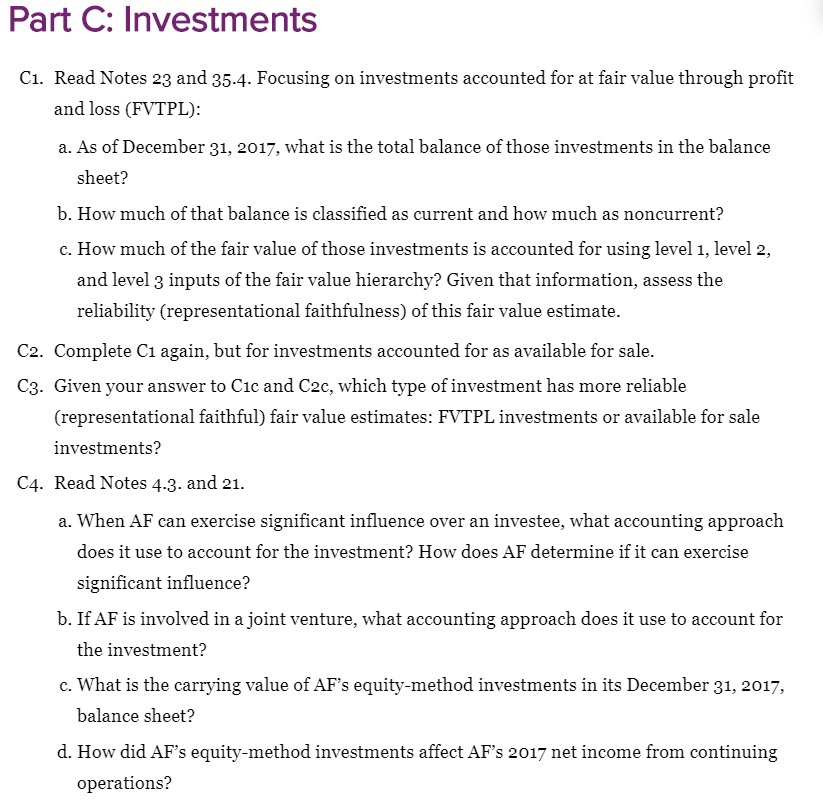
Part C: Investments C1. Read Notes 23 and 35.4. Focusing on investments accounted for at fair value through profit and loss (FVTPL): a. As of December 31, 2017, what is the total balance of those investments in the balance sheet? b. How much of that balance is classified as current and how much as noncurrent? c. How much of the fair value of those investments is accounted for using level 1, level 2, and level 3 inputs of the fair value hierarchy? Given that information, assess the reliability (representational faithfulness) of this fair value estimate. C2. Complete C1 again, but for investments accounted for as available for sale. C3. Given your answer to Cic and C2c, which type of investment has more reliable (representational faithful) fair value estimates: FVTPL investments or available for sale investments? C4. Read Notes 4.3. and 21. a. When AF can exercise significant influence over an investee, what accounting approach does it use to account for the investment? How does AF determine if it can exercise significant influence? b. If AF is involved in a joint venture, what accounting approach does it use to account for the investment? c. What is the carrying value of AF's equity-method investments in its December 31, 2017, balance sheet? d. How did AFs equity-method investments affect AF's 2017 net income from continuing operations? Part C: Investments C1. Read Notes 23 and 35.4. Focusing on investments accounted for at fair value through profit and loss (FVTPL): a. As of December 31, 2017, what is the total balance of those investments in the balance sheet? b. How much of that balance is classified as current and how much as noncurrent? c. How much of the fair value of those investments is accounted for using level 1, level 2, and level 3 inputs of the fair value hierarchy? Given that information, assess the reliability (representational faithfulness) of this fair value estimate. C2. Complete C1 again, but for investments accounted for as available for sale. C3. Given your answer to Cic and C2c, which type of investment has more reliable (representational faithful) fair value estimates: FVTPL investments or available for sale investments? C4. Read Notes 4.3. and 21. a. When AF can exercise significant influence over an investee, what accounting approach does it use to account for the investment? How does AF determine if it can exercise significant influence? b. If AF is involved in a joint venture, what accounting approach does it use to account for the investment? c. What is the carrying value of AF's equity-method investments in its December 31, 2017, balance sheet? d. How did AFs equity-method investments affect AF's 2017 net income from continuing operations







